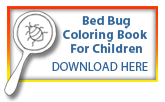What can we learn from termites other than how to exterminate them?
 Value of Termites and Our Search for Alternate Forms of Energy
Value of Termites and Our Search for Alternate Forms of Energy
PHYS.org reports an interesting study showing that termites evolved complex boireactors 30 mission years ago.
Image credits: Termites, fungi play more important role in decomposition than …
Achieving complete breakdown of plant biomass for energy conversion in industrialized bioreactors remains a complex challenge, but new research shows that termite fungus farmers solved this problem more than 30 million years ago. The new insight reveals that the great success of termite farmers as plant decomposers is due to division of labor between a fungus breaking down complex plant components and gut bacteria contributing enzymes for final digestion.
Fungus-farming termites are dominant plant decomposers in (sub)tropical Sub-Saharan Africa and Southeast Asia, where they in some areas decompose up to 90% of all dead plant material. They achieve near-complete plantdecomposition through intricate multi-stage cooperation between the Termitomyces fungi and gut bacteria, with the termites managing these symbionts by providing gut compartments and nest infrastructure. Researchers at the Centre for Social Evolution, Department of Biology, University of Copenhagen and Beijing Genomics Institute (BGI, China) discovered this by analyzing plant decomposition genes in the first genome sequencing of a fungus-farming termite and its fungal crop, and bacterial gut communities. Credits: Termites evolved complex bioreactors 30 million years ago – Phys.org
 Currently the major barrier in biomass utilization is the lack of an effective pretreatment of plant cell wall so that the carbohydrates can subsequently be hydrolyzed into sugars for fermentation into fuel or chemical molecules. Termites are highly effective in degrading lignocellulosics and thus can be used as model biological systems for studying plant cell wall degradation. Credits: Advanced biorefinery in lower termite-effect of combined
Currently the major barrier in biomass utilization is the lack of an effective pretreatment of plant cell wall so that the carbohydrates can subsequently be hydrolyzed into sugars for fermentation into fuel or chemical molecules. Termites are highly effective in degrading lignocellulosics and thus can be used as model biological systems for studying plant cell wall degradation. Credits: Advanced biorefinery in lower termite-effect of combined
Termites reproduce by eating only wood with no nutritional value. This is possible because protists and bacteria that live symbiotically in their intestines have their own purposes and are working, helping one another. In other words, termites and symbiotic microbes are teaming up and working as a factory that dissolves wood. Credits: Termite Intestine Expected to Produce Woody Biofuel – Nikkei …
 Value of Termites and Understanding Climate Change
Value of Termites and Understanding Climate Change
Climate change models could have a thing or two to learn from termites and fungi, according to a new study released this week.
For a long time scientists have believed that temperature is the dominant factor in determining the rate of wood decomposition worldwide. Decomposition matters because the speed at which woody material are broken down strongly influences the retention of carbon in forest ecosystems and can help to offset the loss of carbon to the atmosphere from other sources. That makes the decomposition rate a key factor in detecting potential changes to the climate.
But scientists from Yale, the University of Central Florida and SUNY Buffalo State found that fungi and termites, which help break down wood, may play a more significant role in the rate of decomposition than temperature alone. Credits: Termites, fungi, models, and climate change | Watts Up With That?
Value of Termites Ends At Your Doorstep
Bio fuel is great, but do you want the foundation of your home converted into bio fuel? Would you like your basement to become a test study area for climate change?
If you answered no to the above questions, you probably want to make sure termites are not operating in your home.














Recent Comments